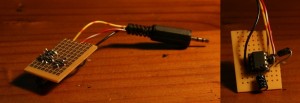EDIT: For info on community compiled data, scroll to the bottom of the article.
I bought a Garmin GPS a few years ago, and one of the first things I did was to load data relating to the position of speed cameras in South Africa. Recently I had someone ask where to get the data, and all that I could remember was that I got it from Garmin’s official website. Searching for such files proved fruitless until I came across the following site, which I believe I used originally.

The data is provided by Garmap, [EDIT – In July 2012 Garmin removed the free access to this data, it now needs to be purchased via Garmin Cyclops. A free trial is available], who release a file weekly with an updated listing of speed cameras and other hazards that they refer to as “Road Safety Data”. To download this data Garmap claim you must register your device with Garmap, a fairly straightforward process requiring you to install the Garmin Communicator Plugin (20MB Firefox Plugin). You will need your Unit ID, which can be found in the about page on your Garmin device and the serial number. But it appears that you can get the data without registering your device or installing the plugin.
There are two methods to load the data. There is a new method which allows you to download straight from the computer to the Garmin (this requires the plugin and is discussed later), or the old method which makes use of the Garmin POI Loader software. This can be downloaded from Garmin’s website here. Click the download link on the right hand side (install was 8.67MB).
After you install it, go to the Garmap website, click on the “Road Safety Data” button in the bottom left. Download the file you want from the “Advanced Users” box. Generally just the Road_Safety_Data_<date>.zip file.
Once downloaded, unzip the folder. Look through the files and delete those folders you don’t want added to your Garmin.The GPX folder is the one in question. Camera Hazards are fixed speed cameras. Mobile Hazards refer to places where cops have been known to regularly trap. Other hazards can be things such as high winds or dangerous areas.
Plug your GPS into the computer and wait for it to be ready. Open the POI Loader. Select Garmin Device and click next. The software should automatically find your device, if not click “Find Device”. If you still have no luck, make sure the GPS is connected and try again. Click Next, here you can choose to erase the previous POIs or if you just want the new ones added on top. It’s worthwhile to note that these POIs are only those added separately and does not include the lists of shops or favourite locations you added while making use of the Garmin.
Click Next. If you choose to delete the previous POIs, you have to finish and reload the program. Browse for the folder you extracted and select the GPX folder. One should select the express install here, else if manual is selected, you have to select options for each file in the folder.
You should now receive a message saying that the POIs have been successfully installed. Click Finish and Safely Remove your GPS from the computer and you should be ready to go.
later: If you choose the “Normal Users” option, you are required to have installed the Garmin Communicator Plugin for your browser. Plug in your device and browse to the Road Safety Data webpage. Select the hazards you would like added, and a “Detect GPS” button should appear. Click this button and if you’ve plugged your GPS in, it should appear in a drop down menu. Make sure it’s selected and click “Download Data”. The text should change to “Downloading” and a notification should appear when it’s complete.
You can check if the data has been loaded by going on your Garmin to “Where to?”, scrolling down to “Extras” and looking in the “Custom POIs” folder. Here you should see a lot of content relating to the POIs you’ve added.
If you ever have issues with the POIs they can be deleted fairly easily by browsing your Garmin from a computer. Search through the drives and you should come across a folder called POI. Depending how you loaded this data there will either be one or several files in the folder. Simply delete this files. Different models may store the data in different locations. Either on the external SD card memory, or the internal memory, just look around.
In my search I have also come across GPS Data Team. They have data covering a range of categories and countries. I have no idea how trustworthy their data is or how often it’s updated, but it’s located here for anyone interested.
Community Compiled Data
In the comments Ivan has given a link to a website run by POIEditor which supplies up to date Road Safety Information. It’s compiled by members of the community and specifically relates to South African RHD. He recommends it mentioning that it is better than the Cyclops generated data. I won’t be able to test it for a while, but give it a go and give feedback.
The data itself is compiled by users on the GPS-Users-Forum. Check them out at their new website, where amongst other things, you can download the data directly.



 6% is small enough that people are willing to let it slide, although it is a fairly large amount. And for Kalahari, it’s 6% on every sale, for doing pretty much nothing. In return you’re put in a fairly risk free position. Kalahari take the money straight from the seller, and you get it a while later. This is one issue, as you can wait two to three weeks after you ship the package before you get disbursed, but if you’re not in a hurry for the money it’s ok.
6% is small enough that people are willing to let it slide, although it is a fairly large amount. And for Kalahari, it’s 6% on every sale, for doing pretty much nothing. In return you’re put in a fairly risk free position. Kalahari take the money straight from the seller, and you get it a while later. This is one issue, as you can wait two to three weeks after you ship the package before you get disbursed, but if you’re not in a hurry for the money it’s ok.